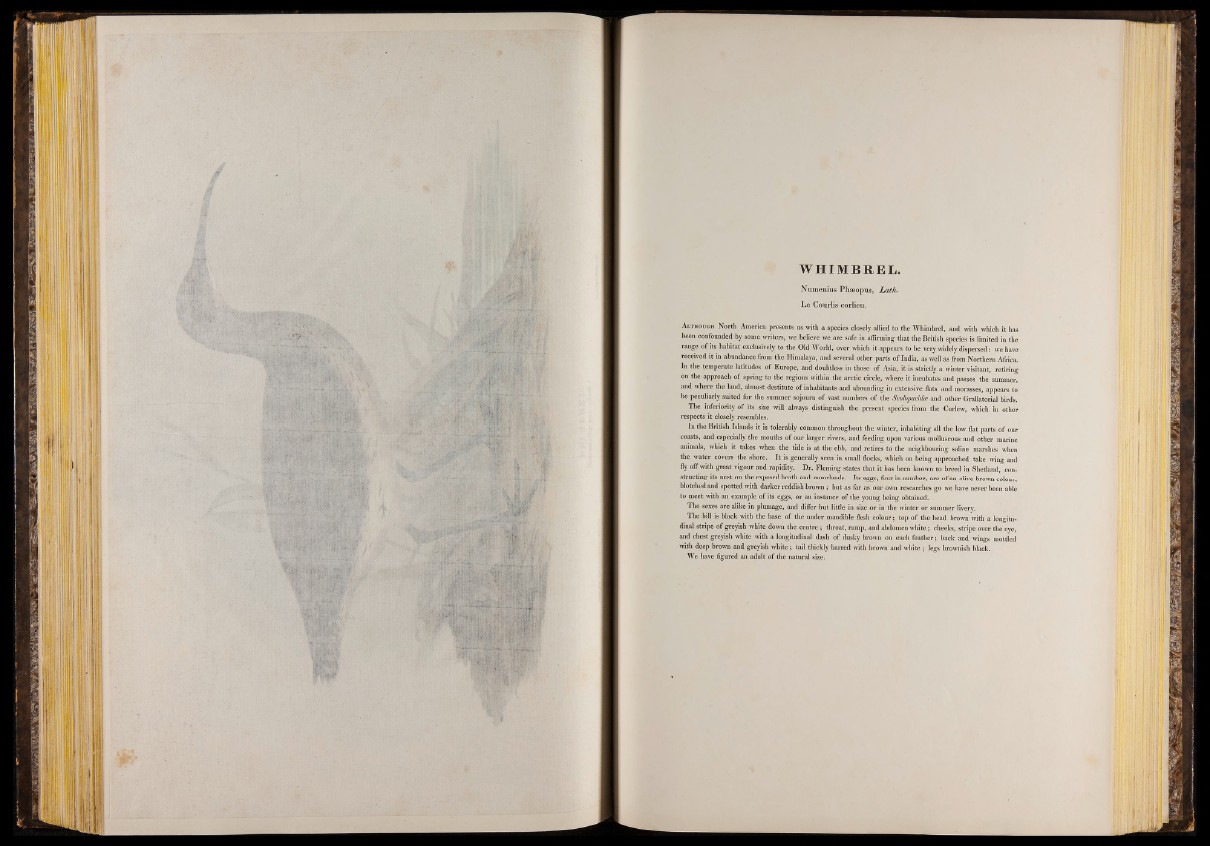
WHIMBREL.
Numenius Phasopus, Lath.
Le Courlis corlieu.
A l t h o u g h North America presents us with a species closely allied to the Whimbrel, and with which it has
been confounded by some writers, we believe we are safe in affirming that the British species is limited in the
range of its habitat exclusively to the Old World, over which it appears to be very widely dispersed: we have
received it in abundance from the Himalaya, and several other parts of India, as well as from Northern Africa.
In the temperate latitudes o f Europe, and doubtless in those o f Asia, it is strictly a winter visitant, retiring
on the approach o f spring to the regions within the arctic circle, where it incubates and passes the summer,
and where the land, almost destitute o f inhabitants and abounding in extensive flats and morasses, appears to
be peculiarly suited for the summer sojourn o f vast numbers o f the Scolopacidce and other Grallatorial birds.
The inferiority o f its size will always distinguish the present species from the Curlew, which in other
respects it closely resembles.
In the British.Islands it is tolerably common throughout the winter, inhabiting all the low flat parts o f our
coasts, and especially the mouths of our larger rivers, and feeding upon various molluscous and other marine
animals, which it takes when the tide is at the ebb, and retires to the neighbouring saline marshes when
the water covers the shore. It is generally seen in small flocks, which on being approached take wing and
fly off with great vigour and rapidity. Dr. Fleming states that it has been known to breed in Shetland, con-
structing its nest on the exposed heath and moorlands. Its eggs, four in number, are o f an olive brown colour,
blotched and spotted with darker reddish brown; but as far as our own researches go we have never been able
to meet with an example o f its eggs, or an instance o f the young being obtained.
The sexes are alike in plumage, and differ but little in size or in the winter or summer livery.
The bill is black with the base o f the under mandible flesh colour; top o f the head brown with a longitudinal
stripe o f greyish white down the centre ; throat, rump, and abdomen white; cheeks, stripe over the eye,
and chest greyish white with a longitudinal dash of dusky brown on each feather; back and wings mottled
with deep brown and greyish white; tail thickly barred with brown and white ; legs brownish black.
We have figured an adult o f the natural size.